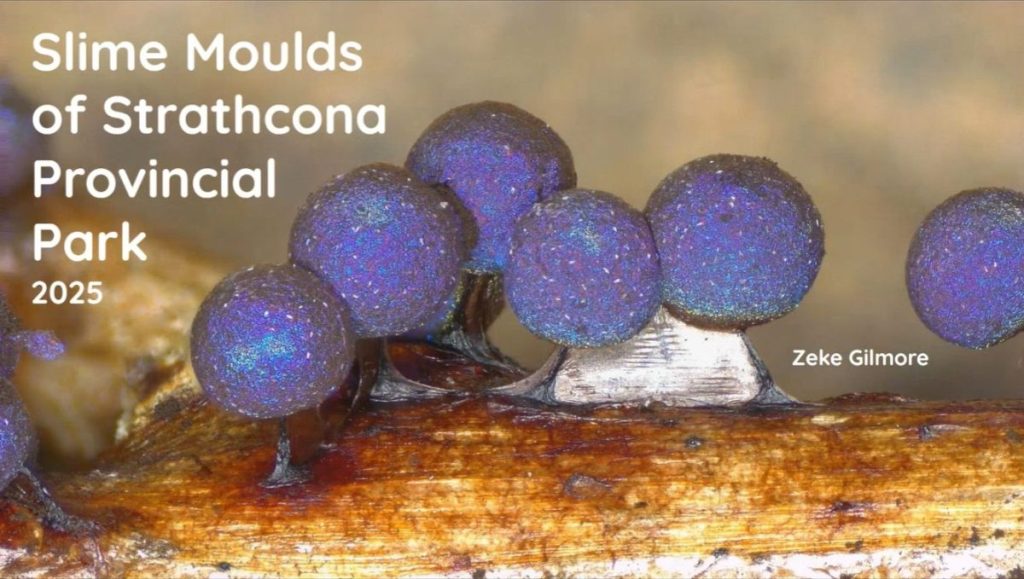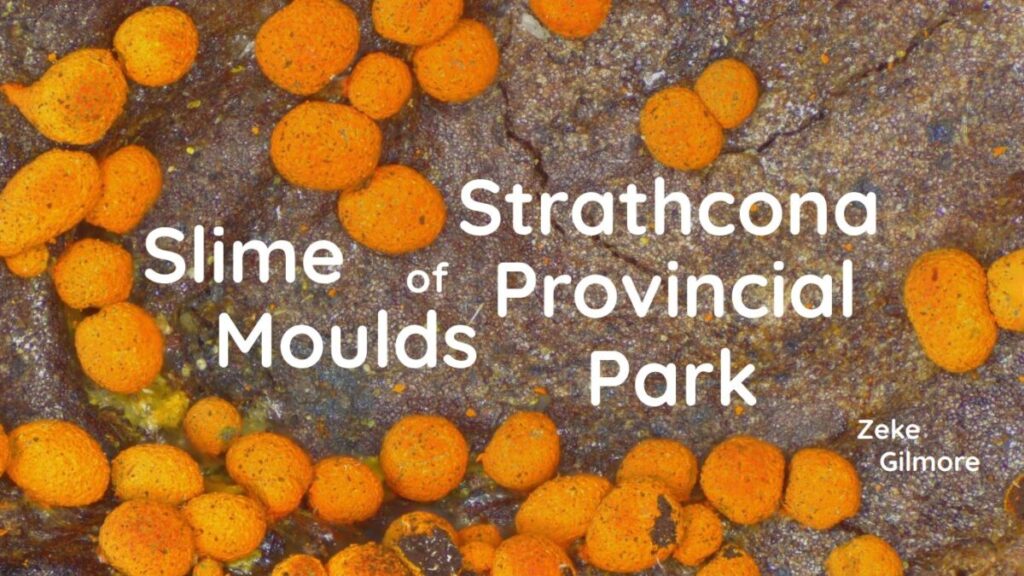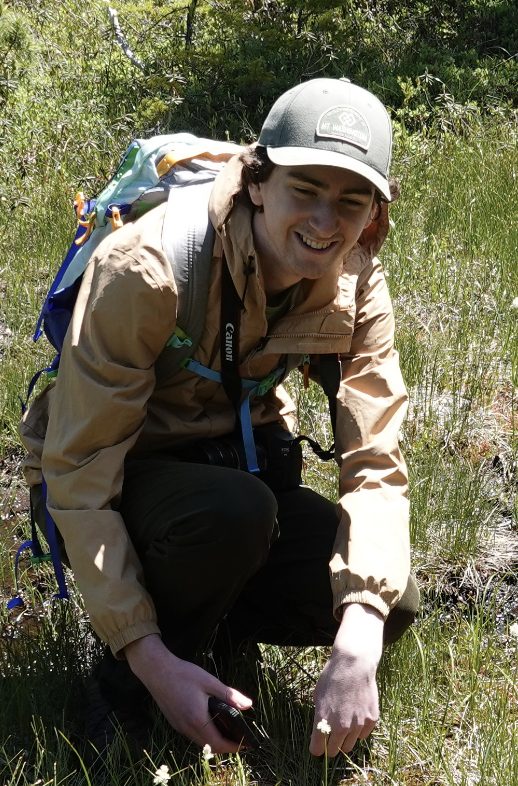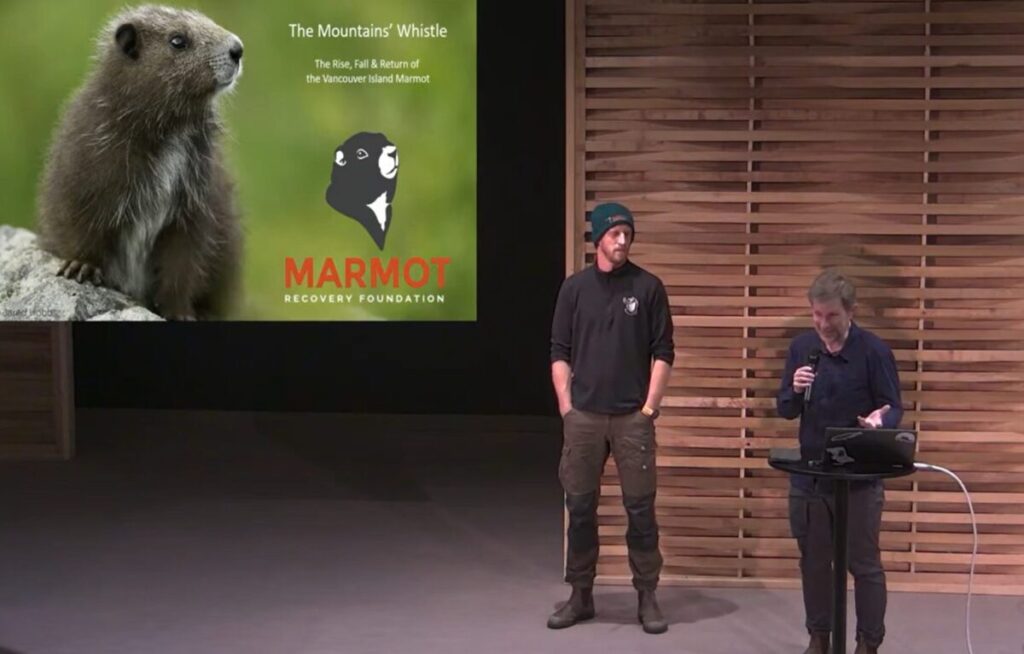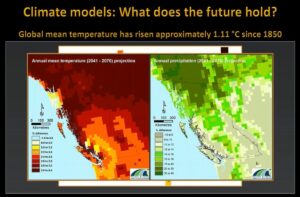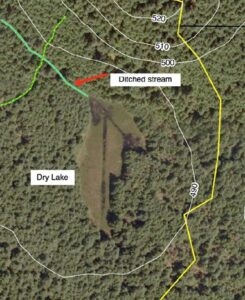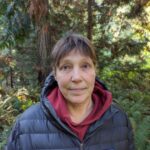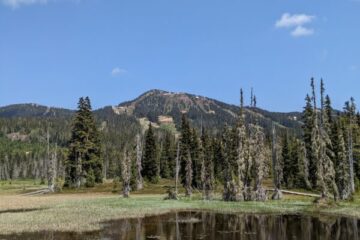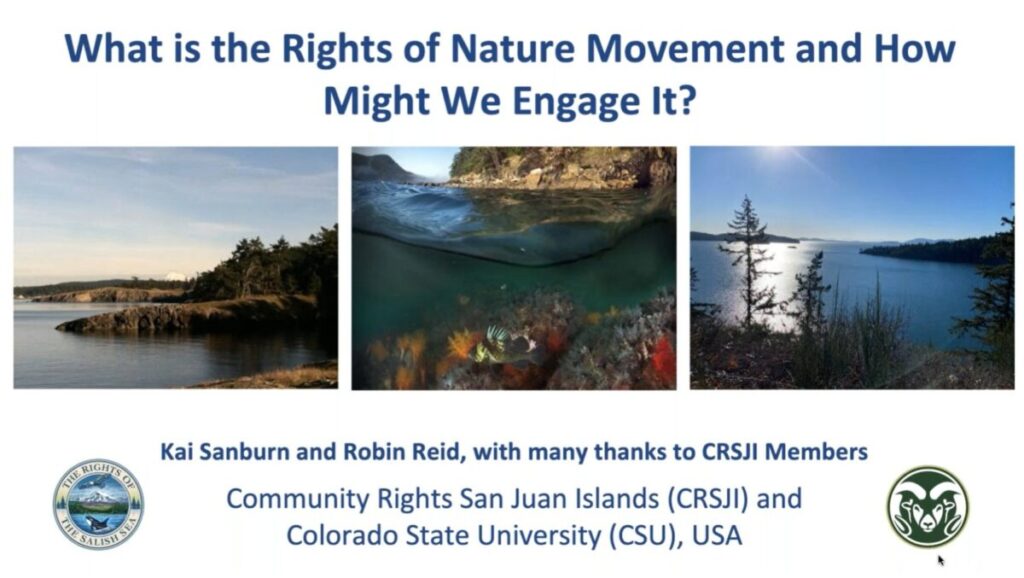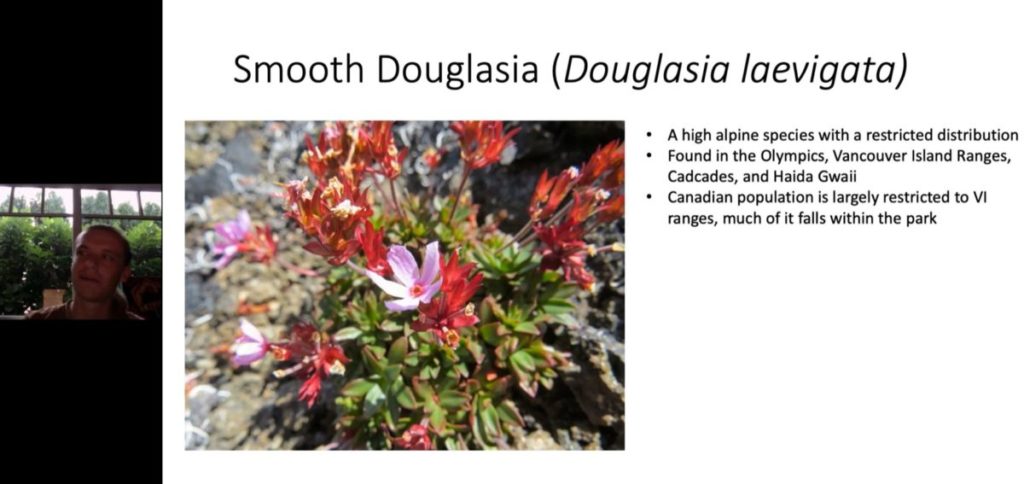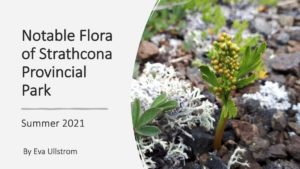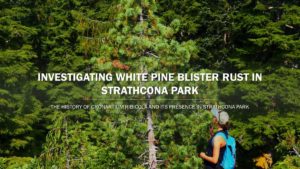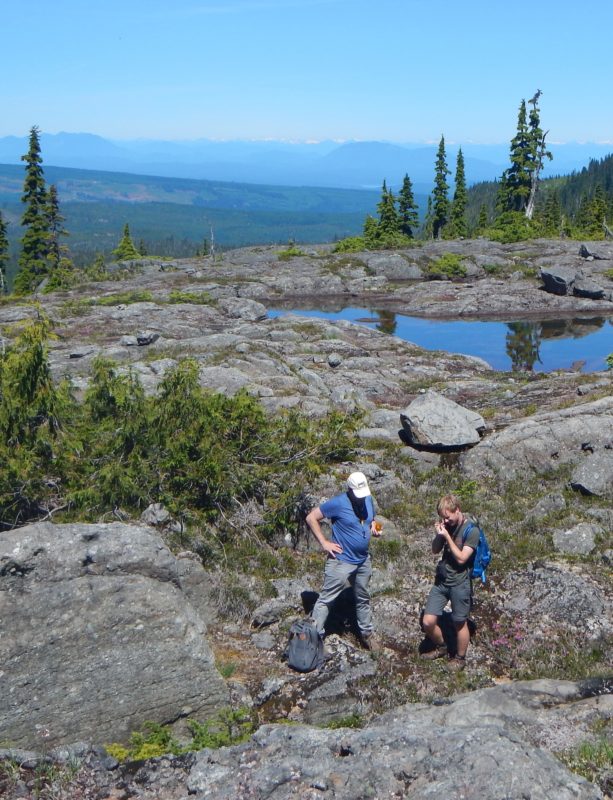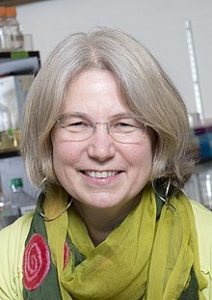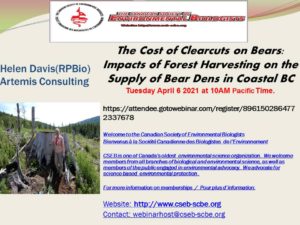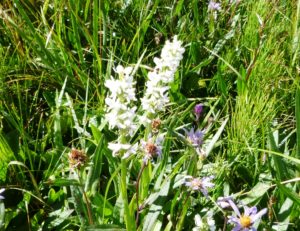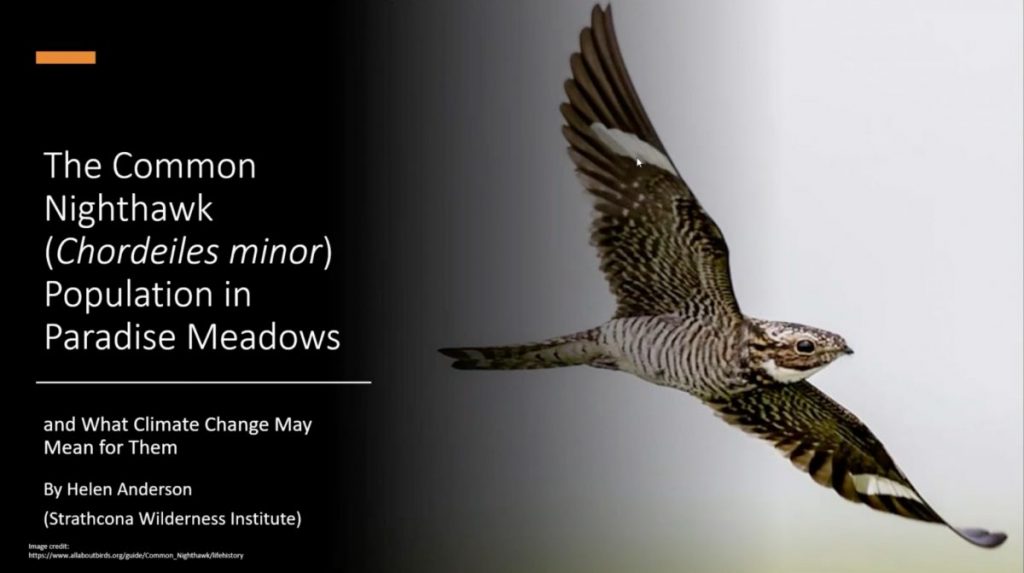Supporting and promoting research in Strathcona Provincial Park is central to SWI’s mandate “to inspire awareness, appreciation and stewardship of the natural world through research, education and participation”. On this page, we are happy to share a series of recorded presentations highlighting the work of our summer students as well as other relevant Research Projects. Have a look at our events page to register to join our upcoming presentations. Click on any of the “Watch Recorded Presentation” buttons below to watch the presentation and learn about some of the fascinating flora and fauna found in the park. All Presentations are free to view.
Slime Moulds of Strathcona Provincial Park 2025
This presentation will focus on the progress made in 2025 on studying and cataloging the slime moulds in strathcona park, including select species of interest and diversity projections for the future.

Observations on the Ecology of Buttle Lake with regards to native fish populations
Situated at the heart of Strathcona Provincial park, Buttle Lake which was once home to large trout populations has never recovered from the twin impacts of the building of the Upper Campbell Dam (1958) and the mining impacts of the Westmin Mine at Myra Falls. The impacts have drawn attention to short studies, notably by Dr. Tom Northcote from 1962 to 2000. SWI Student Paige Stuart has reviewed the literature to date and carried out a series of preliminary observations to determine knowledge gaps and understand the situation limiting recovery.

Slime Molds of Strathcona Provincial Park
Zeke Gilmour, Strathcona Wilderness Institute research student, will present a review of the biology and taxonomy Myxomycetes (slime moulds) that have been found to date in Strathcona Provincial Park. Slime mould are colorful and important ecological protist predators about which relatively little is known, but for which there is growing interest.

Vancouver Island Marmot Info Session 2024
Learn about the current status of the critically endangered Vancouver Island Marmot, and how you can help with the ongoing recovery effort. Hosted by the Marmot Recovery Foundation.
Marmot Recovery Foundation Website: https://marmots.org/

To Reduce the Social, Ecological and Economic Damage from High Severity Wildfires We Must Transform our Landscapes
The Canadian Society for Environmental Biologists (CSEB) will be hosting a webinar by Robert W. Gray on fire ecology and adaptation to the fires that we are to expect in coming years as climate change progresses. As of June 28, over 8 million hectares of forest has burned in high severity fires from Nova Scotia to British Columbia with another three months of fire season still ahead of us. These fires are resulting in significant social, ecological and economic impacts. Transformational change in landscape-scale forest and fire management is key to reducing area burned at high severity.
CSEB Website: https://cseb-scbe.org/

Beyond Climate Change: the nuts and bots of adaptation at the local scale
Presentation From: Ruth Waldick, Ph.D.
Date: 10 December 2023
Climate change has become the primary explanation for ongoing environmental disasters. But is this the whole story? I ask the questions “what creates vulnerability to climate change?” and “what can be done locally to reduce vulnerability?” from a model watershed on a Gulf Island in coastal BC that is a microcosm of the larger challenge of adaptation.
Ruth Waldick, Ph.D.
Ruth is an ecologist and population biologist who has worked at several universities and with the Government of Canada. She sits as a Director with Transition Salt Spring and the Institute for Multidisciplinary Ecological Research in the Salish Sea, is a fan of collaboration, which has created the CARL experimental watershed study area on Salt Spring Island.
Presentation starts at timestamp 01:00
Climate Change and its Potential Impact on Insectivorous Bird Populations of Strathcona Provincial Park
Presentation From: Mateo Jaeckel
Date: 11 September 2023
In this presentation, SWI summer student Mateo Jaeckel will discuss how different aspects and trends of climate change may be impacting insectivorous bird populations that rely on productive fens found throughout Paradise Meadows, Strathcona Provincial Park. Using citizen science data from iNaturalist as well as on-site observations, this presentation will seek to determine whether shifts in precipitation and hydric conditions could affect the ecology of the park.
Webinar Presentation encounter some technical difficulties, YouTube recording may be easier to watch.
What is the Rights of Nature Movement and How Might We Engage It?
Community Rights San Juan Islands and Colorado State University, USA Rights of Nature (RoN) is a global movement that recognizes Nature as a subject with inherent rights to exist, regenerate vital cycles, and be restored when damaged. With deep roots in indigenous worldviews, world religions and human rights, RoN is now law in over 140 Indigenous nations, national and state constitutions and local communities around the world. In this talk, we will describe the history of RoN, the initiatives in progress today, and then focus on the efforts to recognize the rights of the Salish Sea in both Canada and the US.
Presentation starts at timestamp 03:00
Conservation Implications of Clearcutting around Strathcona Provincial Park
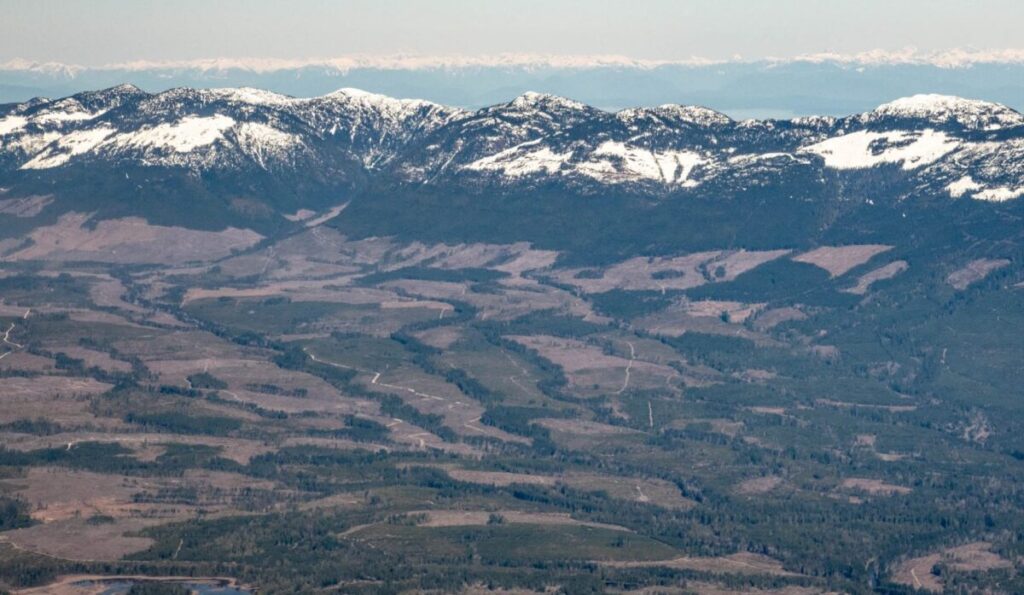
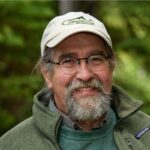
Presentation From: Loys Maingon MA, PhD, MSc (RPBio)
Date: 15 January 2023
BC’s forests have been so intensively and unsustainably clearcut over the past five decades that even the premier has publicly acknowledged that they are “exhausted.” This is synonymous with the international designation endorsed at COP15 of “degraded forests.” Strathcona Provincial Park now stands as a virtual ecological island in a sea of clearcuts. This has important economic and ecological implications for the region and for the management of Strathcona Provincial Park. The government’s stated commitment to “30% by 2030” presents a unique opportunity to complete the 12% advocated for in the 1989 Larkin report, and add a further 18% to the park, if only to meet our obligations to future generations.
Presentation Starts at timestamp 04:58
Have our local watersheds been logged to much or not hydrologically? What would be the implications?
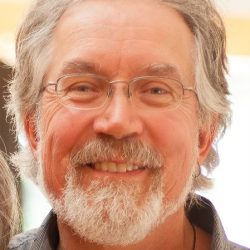
Presentation From: Dave Weaver
Retired Professional Forester
Date: 18 Sept 2022
Have our local watersheds been logged to much or not hydrologically? What would be the implications? This information session will attempt to answer these questions by presenting the findings from the Beaufort Watershed Stewards’ 2021 Hydrological Health Report Card, on four local watersheds on the east side of the Beaufort mountains.
Can community science measure vascular plant elevation changes in Strathcona Park?
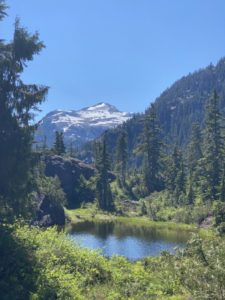
Presentation From: Steven Hayward
SWI 2022 Summer Student
Date: 13 Sept 2022
One aspect of climate change and increasing summer temperatures is the prediction that plants will shift their ranges higher in elevation or northward in latitude to remain in their optimal growing conditions. Community science platforms such as iNaturalist can provide large datasets to researchers and have been used to document flora and fauna in Strathcona Park. Can this dataset be used to track vascular plant elevation changes in Strathcona Park? Validation of an R package ‘rgbif’ that provides elevation data based on GPS coordinates and evaluating the current flora dataset of Strathcona Park are necessary first steps to see if answering this research question is possible. Further steps include analyzing this dataset and understanding the strengths and weaknesses of using this approach.
Species of Conservation Concern in Strathcona
Strathcona Provincial Park occupies a large part of Central Vancouver Island and encompasses a wide variety of ecosystems ranging from above treeline down to low-lying riparian and coastal areas. This diversity in landscapes and vegetation is responsible for the impressive number of species recorded in the park. Due to the park’s large size, many of the ecosystems found within are comparatively intact. Given the park’s high diversity of habitats and large areas of relatively unmodified terrain, it is not surprising that many species which are globally or locally of conservation concern are found within the park. This presentation aims to showcase a few of these imperilled species which utilize the habitats found in the park and explore the significance of the park as it relates to their conservation. Some species discussed will include Seligeria donniana, Cypseloides niger, Chordeiles minor, Pseudocyphellaria rainierensis, Sticta weigelii, Erigeron salishii, and Douglasia laevigata.
Notable Flora of Strathcona Provincial Park
The vascular plants of Strathcona Provincial Park have long been the center of floristic surveys and botanizing excursions. Despite Strathcona Park being subject to floristic surveys since the 1880s and now having many popular backcountry trails, the gaps in understanding species occurrences and distribution are still large. Biodiversity surveys across Strathcona Park this past summer revealed some of the lesser-known flora species of the park. Ranging from species never recorded in the park to unexpected oddities, Eva will present some of these notable flora and why they stand out from the 300+ species of vascular plants observed this summer.
Eva is working towards a joint degree in Environmental Studies and Psychology at the University of Victoria. She has worked and hiked in the Park for several years and according to her iNaturalist profile “I just really love vascular plants and being outside.“
Investigating White Pine Blister Rust in Strathcona Park
Cronatium ribicola or White Pine Blister Rust, is an invasive, and often deadly fungus present throughout British Columbia. Here, summer student Kaitlyn Kuzma-Wells will delve into its history, life cycle and impact on the Western White Pines of Strathcona Park.”
Kaitlyn is working towards a degree in Biology and Environmental Studies at the University of Victoria. She describes herself in her iNaturalist profile as having “a dangerous addiction to hiking!“ and as “absolutely in awe of nature and can’t get enough of it.”
Citizen science engagement in surveys of bryophytes and lichens in Strathcona Provincial Park.
Overview: Strathcona Provincial Park is the largest wilderness area on Vancouver Island which spans more than 250,000 hectares of the rugged snow-capped mountains, sub-alpine, and coastal temperate rainforest. Although the wilderness of Strathcona Park has been the subject to many botanical surveys since the 1880s the level of scrutiny has been inadequate considering the heterogeneity and inaccessibility of the landscape. Bryophytes and Lichens are among the most neglected due to their cryptic nature, taxonomic difficulty, and the research bias towards vascular plants. App-based citizen science programs such as iNaturalist are effective tools to enhance awareness of biodiversity, address gaps in floristic data, and monitor rare plant populations. We used iNaturalist as a repository for tracking the Strathcona Wilderness Institute’s bryological and lichenological surveys of Strathcona Park during July-August 2019, and 2020. We found 186 bryophyte species, and 165 lichens. These surveys increased the known lists by 61 species of bryophytes (total 304), and 140 species (total 170) of lichens. These curated projects used in conjunction with surveys conducted by the Strathcona Wilderness Institute establish a functional floristic baseline essential for species conservation and increase public awareness of these marginalized organismal groups.
Watermelon Snow: Science, Art and a Lone Polar Bear.
Dr. Lynne Quarmby’s presentation will be talking about her recently published book “Watermelon Snow” (McGill University Press). Her voyage through the dramatic landscapes of the high Arctic convinced her of the need for action on climate change. She presents a unique human and scientific perspective on this life at a time of increasing desperation about the future.
Dr Quarmby is Professor of Cell Biology in the Department of Molecular Biology and Biochemistry at Simon Fraser University. She has also run as a candidate for the Green Party of Canada.
Impacts of Forest Harvesting on the Supply of Bear Dens in Coastal B.C.
A presentation by Helen Davis on the impact of BC’s forest policies on wildlife which adversely affects the black bear population on Vancouver Island due to a shortage of den habitat. Biologist Helen Davis has been doing great work creating artificial habitat in North Vancouver Island.
Helen Davis is an independent research biologist in British Columbia at Artemis Wildlife Consultants, specializing in research and conservation of black bears, grizzly bears and species at risk (including badgers and western screech-owls). She has been studying bear dens on Vancouver Island and elsewhere in Coastal BC for over 25. The dens are typically in or under large old-growth cedar. In the presentation she will discuss the impact of BC’s Forest policies on wildlife; how the dwindling numbers of critical denning trees is leading to a collapse in the black bear population on Vancouver Island and what she is doing about it.
Orchid Pollinators of Strathcona Park
Dr. Janes and her student Genevieve worked up on Forbidden Plateau this summer collecting data about the pollinators of two species of Platanthera orchids in meadow areas. They will discuss their project and its findings in this free webinar – “Many plants hybridize naturally suggesting shared pollinators. Motion detection video monitoring helped us determine potential diurnal and nocturnal pollinators of Platanthera dilatata and P. stricta in the Mt. Washington area; two species that hybridize producing P. estesii. We find little overlap in the floral visitor community associated with each species.”
Dr Janes received her PhD from the University of Tasmania (Australia) in 2010 for her work on the ecology, evolutionary relationships and conservation genetics of native orchids in Australia. Since then, she has held post-Doc positions in Australia and in Canada and is now Assistant Professor in Plant Ecology/Genomics at Vancouver Island University. Her interests in evolutionary processes in orchid families have brought her to work on the pollinators of Platanthera species in our subalpine meadows – Platanthera dilatata is the fragrant white bog orchid whose perfume on a hot August day is one of the unforgettable delights of a summer hike in Strathcona Park.
Balancing Increasing Recreation and Conservation in Strathcona Provincial Park, BC
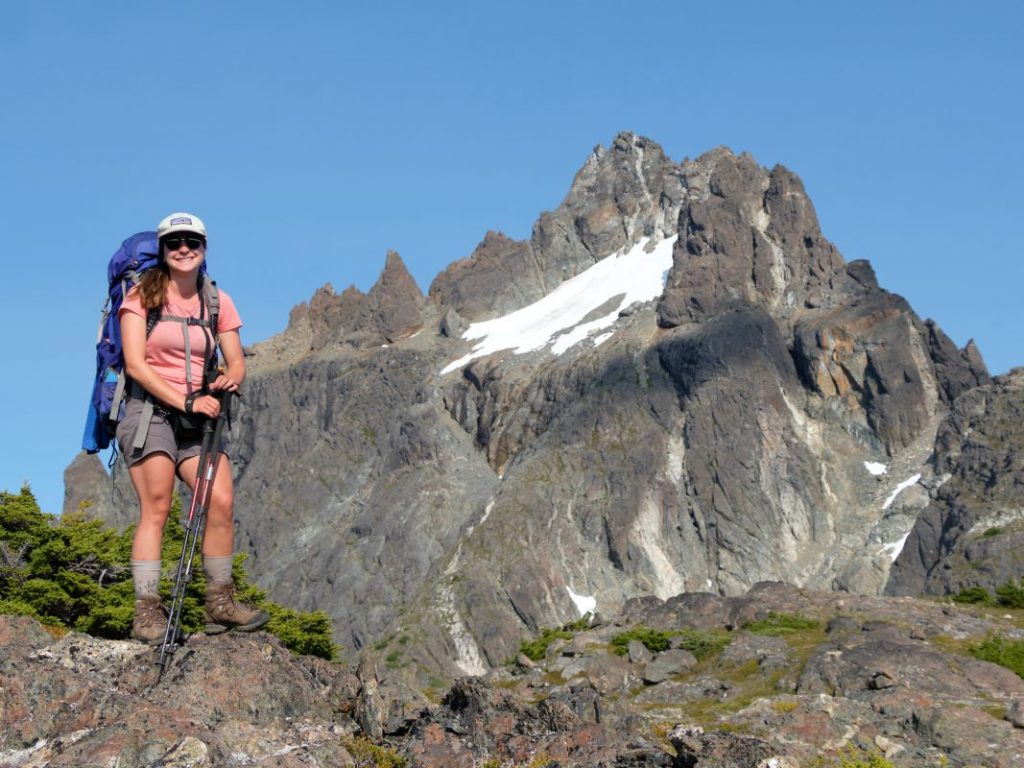
Presentation From: Erin Sketchley, 4th Year BSc Earth and Environmental Sciences, UBC Okanagan
September 2020
In this presentation SWI Summer Student, Erin Sketchley, 4th Year BSc Earth and Environmental Sciences, UBC Okanagan, discusses her finding on the impacts of recreation in Strathcona Provincial Park. During the summer of 2030 she hiked over 600km of trails cataloguing the flora and fauna. This presentation discusses the impacts from people with respect to recreation, how the park is laid out for management purposes, and strategies we could use to mitigate these recreational impacts.
For a list of Erin’s sources Click Here.
The Common Nighthawk Population in Paradise Meadows
In this presentation SWI 2020 Summer Student, Helen Anderson, UVIC Biology Major, gives a preliminary look into the Common Nighthawk population. Furthermore, she discusses what the literature suggests regarding potential climate change impacts on their populations.
2021 Update on Vancouver Island Canada Jay Research
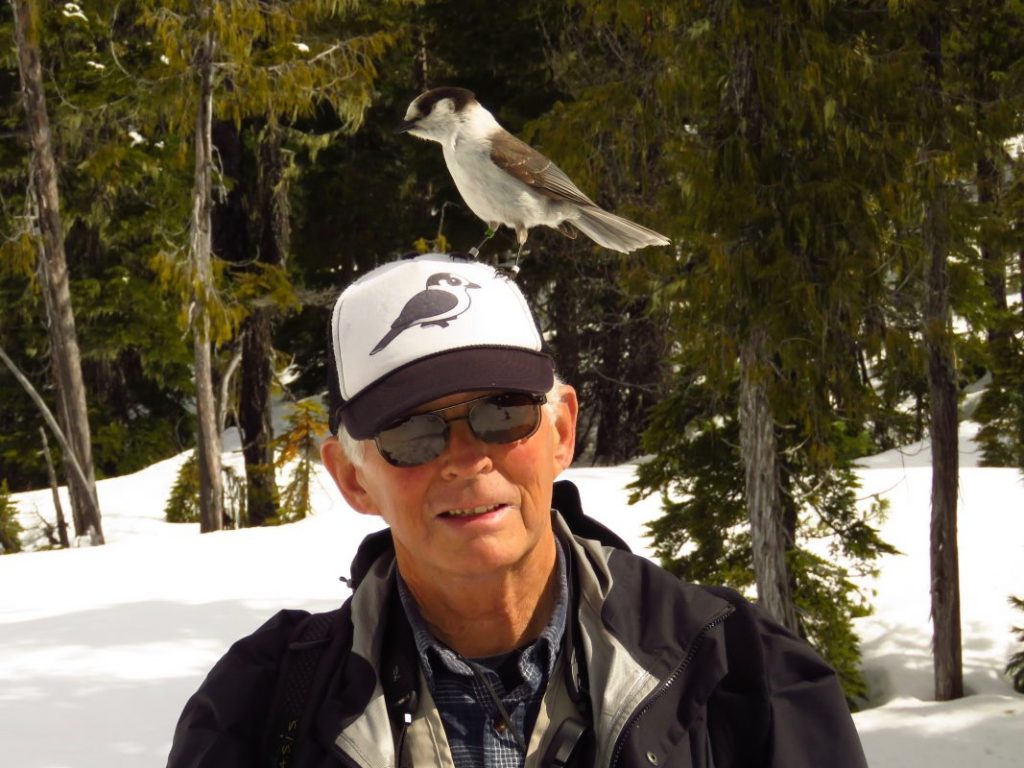
Presentation From: Dan Strickland
23 July 2021
The Canada Jay has three recognizable races that all meet in British Columbia. The one in the mountains of Vancouver Island and the mainland coast is the most distinct and for 60 years was even considered to be a distinct species called the Oregon Jay. Dan Strickland began a study of a population of these jays at Paradise Meadows in 2016 and in the last four years has learned that they are even more distinct than we realized, not only in appearance but also in their social organization and nesting. Dan will tell us what he has learned in this 2020 update on his work and speak about the possible restoration of these Pacific Coast birds to the status of separate species.
All of Dan’s Research reports are posted here.
A Short Biography:
Dan Strickland was born in Ontario and educated at the Universities of Toronto and Montreal. For 30 years he was the Chief Park Naturalist of Algonquin Provincial Park where he was responsible for the development of two world-class museums, a major publications program, a system of 17 interpretive trails and a summer program of hikes and slide talks on Park human and natural history. As a side project, he also carried on a behavioural study of colour-banded Canada Jays now in its 58th year and one of the longest-running studies of its kind in the world. Now, in retirement, he has expanded the scope of his Canada jay studies to include research into the race found in the coastal mountains of BC and the northwestern U.S.
